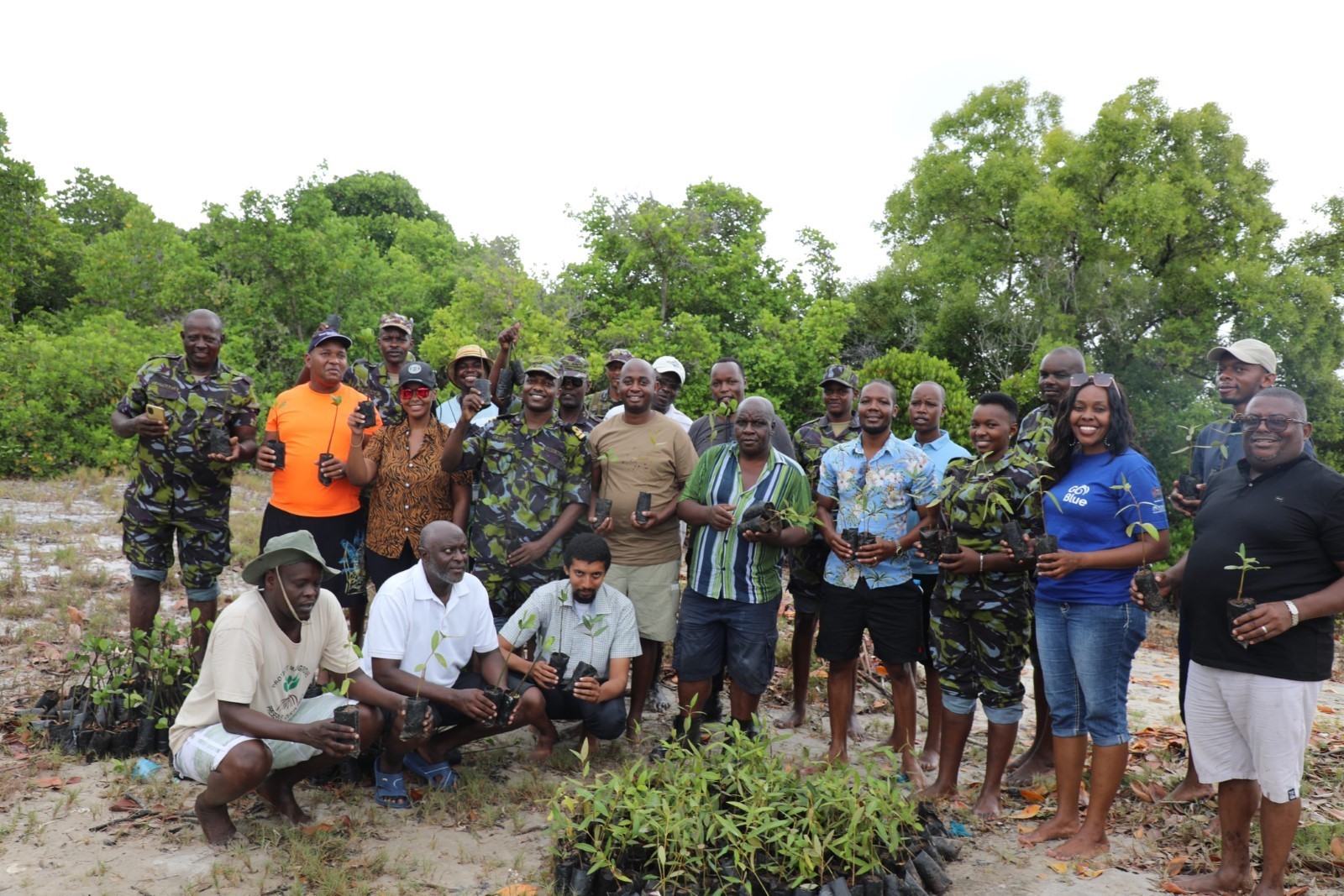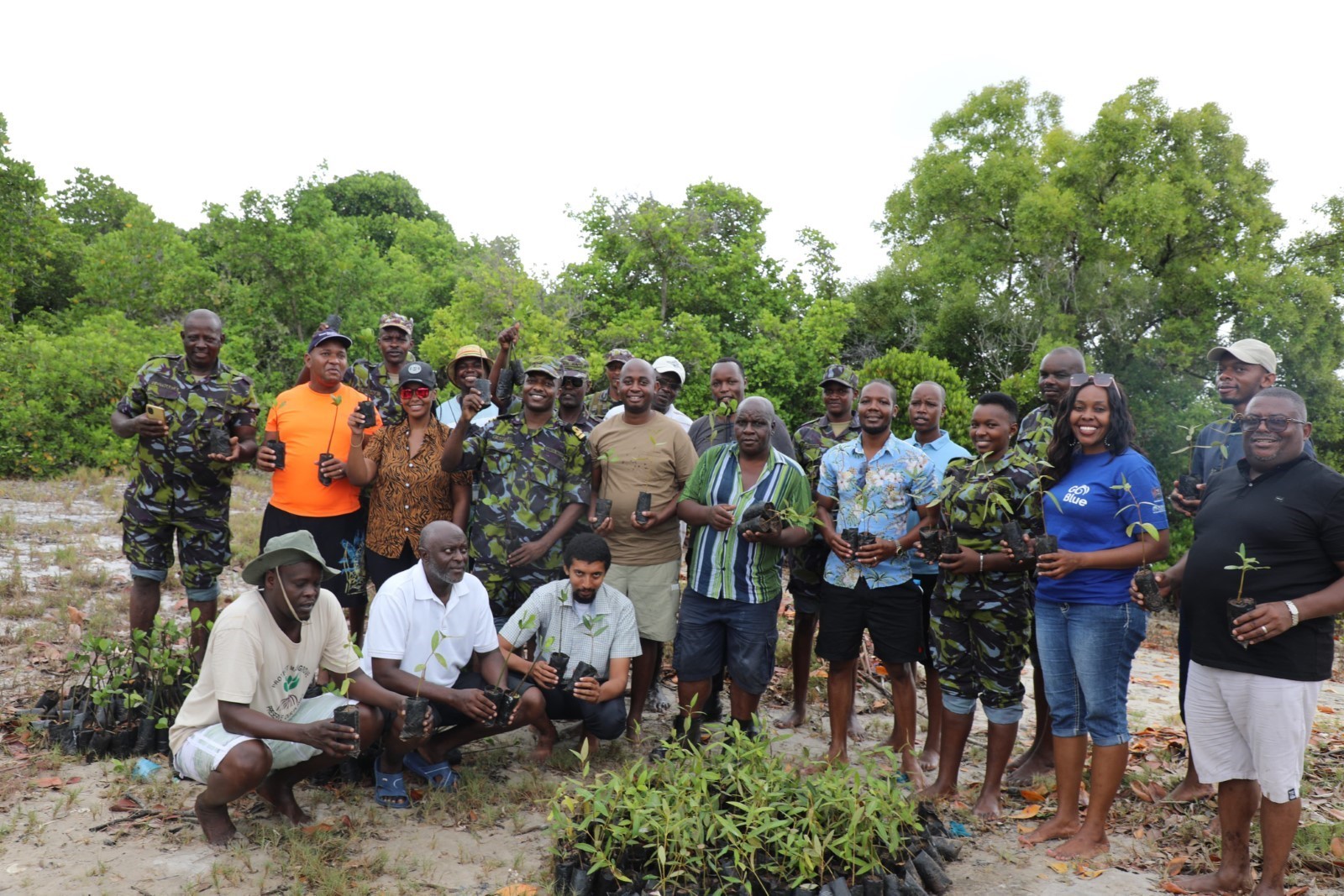
To enhance sustainable land-sea planning and management across Kenya’s coastal region, the Go Blue Project has conducted four impactful learning exchange visits in collaboration with Jumuiya ya Kaunti za Pwani (JKP). These visits brought together 12 county officials from each of the six coastal counties—representing the blue economy/environment and planning dockets—to explore innovative pilot initiatives addressing pressing environmental and socio-economic challenges.
During the four workshops carried out between December 2024 and March 2025, participants from Lamu, Kwale, Mombasa, Taita Taveta, Tana River, and Kilifi engaged in hands-on learning, discussions, and site visits to projects that showcase nature-based solutions, waste management innovations, and sustainable urban planning.
Exploring Transformative Coastal Initiatives
Mikindani Constructed Wetland (UNEP)
A nature-based solution to urban wastewater management, this constructed wetland in Mombasa is improving water quality and marine ecosystem health while demonstrating a low-cost, replicable model for other counties.
Lamu Blue Carbon Initiative (UNEP)
Participants visited community-led mangrove restoration sites in Lamu. The project, implemented in partnership with The Nature Conservancy, aims to reduce coastal degradation, enhance carbon sequestration, and generate sustainable livelihoods through blue carbon credit mechanisms.
Taita Taveta Material Recovery Facility (MRF) (UN-Habitat)
This MRF is tackling municipal solid waste management, increasing recycling efforts, and creating jobs, particularly for women and youth engaged in waste collection. The visit highlighted policy approaches and technical considerations for scaling up such solutions.
Mazingira Park Public Space Upgrade (UN-Habitat)
In Kilifi, county officials learned about community-driven urban regeneration at Mazingira Park, where public space improvements are fostering environmental awareness, recreation, and sustainable tourism.

Building a Knowledge-Sharing Network
The exchange visits not only equipped county officials with technical insights but also fostered peer-to-peer learning and strengthened regional collaboration. Participants identified ways to replicate and adapt these initiatives in their respective home counties, ensuring long-term impact beyond the Go Blue project’s lifespan.
Jimmy Kahindi, Director, Environment in Kilifi County noted: "Seeing these projects in action has inspired us to push for similar interventions in our county. We now have a clearer roadmap for implementing nature-based and circular economy solutions."
Looking Ahead
With coastal counties facing increasing environmental pressures, scaling up these solutions will be key to achieving sustainable blue economy growth. As part of the Go Blue Project, which is funded by the European Union, the UN Go Blue Component 2, jointly implemented by UNEP and UN-Habitat, focuses on connecting people, cities, and the ocean through integrated, ecosystem-based land-sea planning and management.